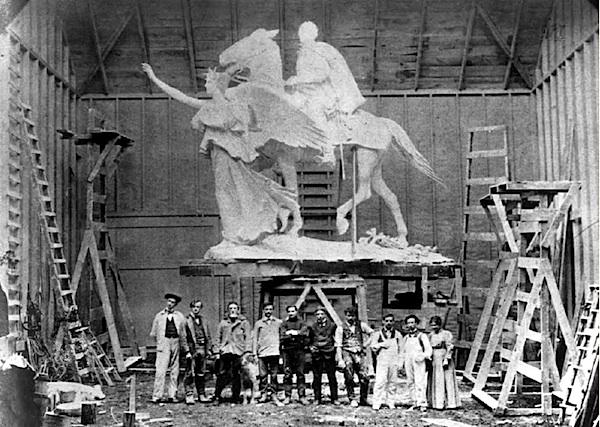
Augustus Saint-Gaudens didn't let scale get in the way of his works/NPS
If you've read any history of the Revolutionary War, you know how fickle and lucky we were to be triumphant in our quest for freedom. That's evident throughout the city of Boston and within the surrounding countryside. Standing in the spots that made history can make the past come to life for the whole family. This trip is about what was, and now is.
At Boston National Historical Park, put on your walking shoes and walk the Freedom Trail from north to south. You'll go from Bunker Hill (where the British got a hint of what was to come), on to the Old North Church (where lanterns signaled their invasion), and then to the Paul Revere House. Faneuil Hall has been called the Cradle of Liberty, where in 1764 the seeds of dissent were sown. Put yourself in the shoes of the citizens in 1770 when British arms were used against unarmed citizens at the site of the Boston Massacre, and finish your day at Boston Common, since 1634 America's oldest public park.
Venturing afield to fill in the story, head a half hour westward towards Concord on Highway 2 where the opening battle of the War of Independence took place on April 19, 1775. Here, Minuteman National Historical Park preserves the artifacts, stories, and landscape that forged a nation.
Another 2.5 hours up I-89 are two notable historic gems of the National Park System. Near the town of Windsor, New Hampshire, is Saint-Gaudens National Historic Site, the grounds of one of America's greatest sculptors. Augustus Saint-Gaudens was the designer of the 1907 $20 gold coin, and creator of the well-known Standing Lincoln statue. With its extensive galleries, grounds, nature trails, and public concerts, this gorgeous, hardwood-forested mountain setting is a great destination. The exhibit on Abraham Lincoln, whom the sculptor knew personally, connects us with our past triumphs, and tragedies.
Just 22 miles to the west, across the Connecticut River in Woodstock, Vermont, is the Marsh-Billings-Rockefeller National Historical Park. There, under 400-year-old hemlocks and sugar maples is a landscape dotted with stone walls and covered bridges. It's an agrarian legacy of conservation and sustainability. This operating dairy farm (c.1871) has been, and remains, a model of ecological philosophy since 1865's publication of George Perkins Marsh's book, Man and Nature. Time your visit to the park's calendar and you'll find sheep-shearing demonstrations and horse-drawn wagon rides, free ice cream, and ongoing dairy operations in 19th century barns. You'll shudder at just how much work it took to survive a century ago, compared to our ease of existence today.
Deeply deforested during the 1800s, more than 10,000 trees have since been planted, making the park a shady, cool respite even on the warmest summer day. And, the Sunday summer concert series attracts musicians from around the world. It's a trip back in time.

 Support Essential Coverage of Essential Places
Support Essential Coverage of Essential Places







Add comment